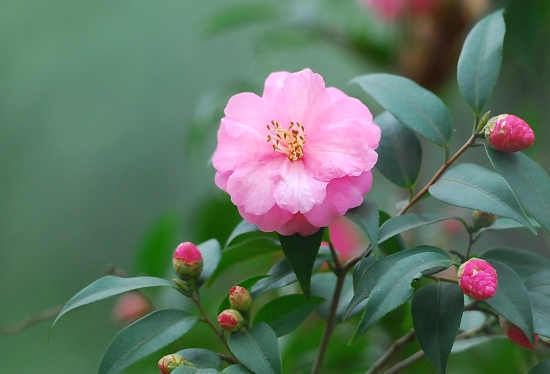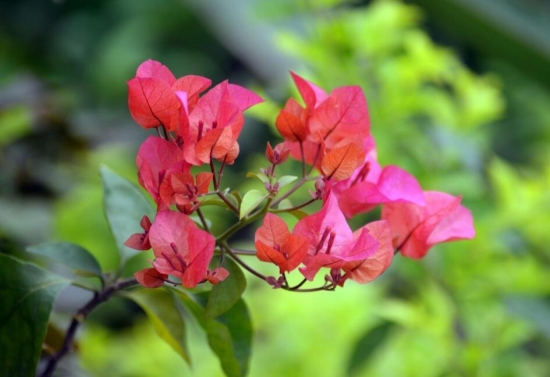In winter, when the temperature is low, plants are also tested. People who love flowers always worry that their flowers and plants will not survive the cold winter. In fact, as long as we have the patience to help the plants, it is not difficult to see full of green branches in the next spring. Don’t underestimate the following seven tips, which can help the flowers and plants be still available next spring.
1. Ensure proper temperature
① Deciduous woody flowers, such as rose, honeysuckle, pomegranate, etc., are generally dormant in winter, and the room temperature can be controlled at about 5 degrees. When the temperature is lower than 5 degrees, plastic bags can be used to cover the pot to increase the temperature.
② Evergreen woody flowers, such as Milan, jasmine, gardenia, etc., must ensure that the room temperature is above 15 degrees. If the temperature is too low, the plants are vulnerable to freezing injury and death.
③ Perennial herbs, such as asparagus, geranium, four season crabapple, ivy, scindapsus aureus and other plants, should preferably keep the temperature at about 15 ℃, and the minimum temperature should not be lower than 10 ℃.
④ The temperature of perennial indoor woody plants, such as pachira, radermacheera sinica and ficus elastica, should not be lower than 5 ℃. When the temperature is low, it is easy to cause frost damage.
2. Ensure proper lighting
① Plants that need light: In winter, the light is weak, and flowers should be placed in places with sufficient light, especially for plants that bloom in winter and spring, such as cyclamen, clivia, camellia, crab cactus, and so on. The light must be sufficient.
② Shade tolerant plants: For indoor foliage plants, such as scindapsus aureus, chlorophytum, ivy, etc., although the light requirements are not strict, it is better to have scattered light.
In addition, we should always keep the indoor air circulation. At noon when the weather is sunny and warm, we should open the windows to breathe, but we should avoid the cold wind blowing on the plants.
3. Proper watering
① Watering time: The temperature is low in winter. It is better to water when the temperature is high at noon to make the temperature close to the room temperature. When watering flowers, you must air them.
② Watering frequency: Most plants are in dormant or semi dormant state in winter, requiring little water, so water must be controlled in winter to reduce the frequency. Do not water as long as the pot soil is not too dry.
4. Reasonable fertilization
In winter, most flowers enter the dormancy period, and there is little demand for fertilizer. At this time, fertilization should be reduced or stopped as much as possible, otherwise it is easy to cause plant root rot.
5. Pest control
In winter, the temperature is low, and there are relatively few insect pest infections. However, some fungal diseases, such as gray mold and root rot, should still be paid attention to. Usually, pay attention to ventilation and reduce the humidity of pot soil, which can effectively prevent and control bacterial infections.
6. Increase air humidity
The air is dry in winter, especially in the heating room. If the air is too dry, the following methods can be used to increase the air humidity:
① Foliar spray method
Select a sunny noon to spray water on the leaves or around the plants.
② Plastic bagging method
Cover the flowerpot with plastic film to increase air humidity.
7. Pay attention to cleaning the blade surface
In winter, the indoor air circulation is less, and the plant leaves are easy to accumulate dust, which not only affects the beauty but also affects the normal growth of plants, so it is necessary to clean them in time. Wipe gently with sponge or other soft cloth to keep the leaf surface clean.
Post time: Nov-22-2022



